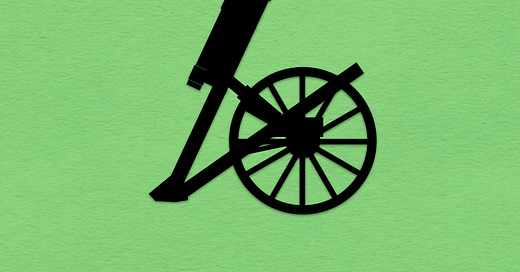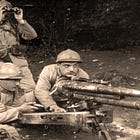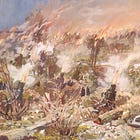Soon after the end of the First World War, the Ordnance Department of the US Army began work on an “infantry howitzer.” In keeping with the frequently expressed wishes of prominent infantry officers, this piece of ordnance would replace the two definitive weapons of the howitzer companies of infantry regiments: the 3-inch Stokes mortar and the 37mm infantry gun.
The first two prototypes of the infantry howitzer used barrels of relatively modest caliber: 1.8-inch and 2.24-inch. These worked well when firing relatively small shells over relatively flat trajectories. However, when employed to project larger projectiles in the manner of a mortar, the results were disappointing. (Rather than striking the ground with their heads, the mortar bombs landed on their tails.)
As a result of the failure of the two “dual-use” prototypes to meet expectations, the Ordnance Department decided to proceed with the development of three different devices: a 37mm gun, a 2.24-inch mortar, and a 75mm mortar. All three of these were to be breach-loading weapons mounted on wheeled carriages that, wherever possible, made use of common components.
The new 37mm gun (Model 1923E) was to be larger than the 37mm gun (Model 1916) adopted during the First World War. Thanks to a much larger propelling charge, its shells would fly much faster, follow a flatter trajectory, and penetrate thicker armor than projectiles fired by the existing infantry gun.1
The two mortars of the “1923 family of infantry artillery” developed by the Ordnance Department had much in common. Indeed, were it not for a few details of it recoil mechanism, the 75mm piece could be described as a scaled-up version of the 2.24-inch piece.2
While it was working on the three new infantry weapons, the Ordnance Department conducted tests of the Brandt-Maurice mortar bomb that, some five years earlier, had been adopted by the French and British armies for use with the 3-inch Stokes mortar. At the end of these trials, the authorities concerned recommended against the adoption of this French-built projectile, which they characterized as both inaccurate and unreliable.3
KF Adamson, “Infantry Artillery Weapons (Model of 1923)” Army Ordnance, November-December 1923, pages 155-156
Adamson, op. cit., pages 156-157
“Notes from the Chief of Infantry” Infantry Journal, December 1923, page 697












